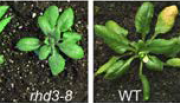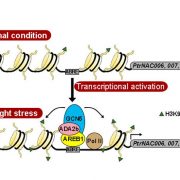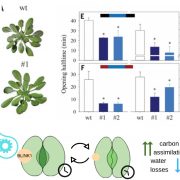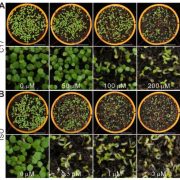
Announcing the Plantae Conviron Seeding Discovery Competition
Blog, Graduate Students, Postdocs, Undergraduate StudentsWe’re excited to launch a novel initiative in support of early career plant scientists: the Plantae Conviron Seeding Discovery competition...

Hijacking the ER membrane – lessons from Turnip mosaic virus
Blog, Plant Physiology, Plant Physiology: News and ViewsBy Lynn GL Richardson
Positive-strand (+)RNA viruses account for the majority of plant viruses. Apart from their significant impact on worldwide agriculture, they also inform our understanding of basic virus biology (Scholthof et al., 2011). Upon entry into the cells of their host, (+)RNA viruses…

Fantastic Collaborations and How to Find Them
Careers, Careers - Blog0 Comments
/
Guest post by George Kantor, Senior Systems Scientist, Robotics Institute, Carnegie Mellon University
This much is a truism: a successful career in any interdisciplinary field requires collaboration with people from different disciplines. It is more difficult to define what skills are needed to be…

How Plants Activate Drought-Responsive Genes
Research, The Plant Cell, The Plant Cell: In a NutshellLi et al. study a complex that regulates gene expression during drought stress. Plant Cell https://doi.org/10.1105/tpc.18.00437
By Shuang Li, Ying-Chung Jimmy Lin, Vincent L. Chiang, and Wei Li
Background: Plants may become drought tolerant by activating specific drought-responsive…

Plant Physiology Focus issue on biotic stress
Plant Science Research WeeklyThe April 2019 issue of Plant Physiology includes a set of papers addressing biotic interactions between plant and pathogens or pests. As the editors indicate, progress on this topic has been rapid and significant. Key topics explored in reviews and research articles include: the roles of plant hormones,…

Review: Tackling plant phosphate starvation by the roots (Devel. Cell)
Plant Science Research WeeklyThe root is remarkably responsive to nutrient status of both the local environment and the whole plant. These external and internal factors affect the expression of transporters, interactions with mycorrhizal symbionts and also the overall pattern of growth and development of the root system. In this…

CRISPR-Chip: Detection of gene variants in unamplified DNA using graphene field-effect transistors ($) Nature Biomed Engineering
Plant Science Research WeeklyCRISPR-Chip combines the selectivity of CRISPR-Cas gene recognition with the sensitivity of a graphene-based field-effect transistor. It contains an immobilized complex of catalytically deactivated Cas9/CRISPR and an appropriate guide strand attached to a graphene surface. When this complex recognizes…

Optogenetic manipulation of stomatal kinetics improves carbon assimilation, water use, and growth ($) (Science)
Plant Science Research WeeklyOptogenetics is a biotechnique that uses light-sensitive molecules to regulate cell activity. In plants, stomatal aperture mediates both CO2 uptake for photosynthesis and water loss by transpiration. The carbon-water trade-off control affects water use efficiency (WUE). Here, Papanatsiou et al. studied…

Generating novel, dual herbicide-resistant crops using CRISPR-mediated gene editing (Plant Physiol)
Plant Science Research WeeklyThere is an ever-growing need for novel herbicides as more weeds are becoming resistant to commonly used herbicides. In a recent report from Hu et al., the authors identified that a previously described cellulose biosynthesis-inhibiting chemical, C17, possesses an herbicidal quality. The authors showed…

